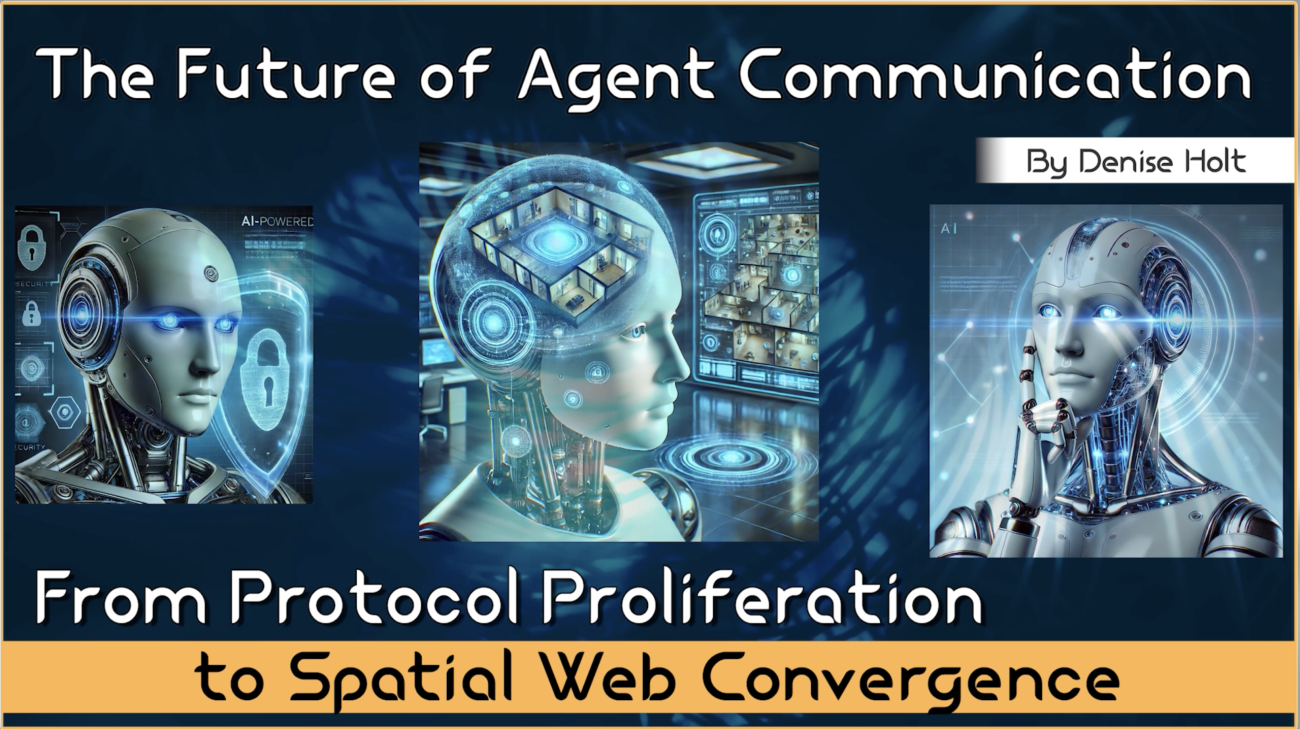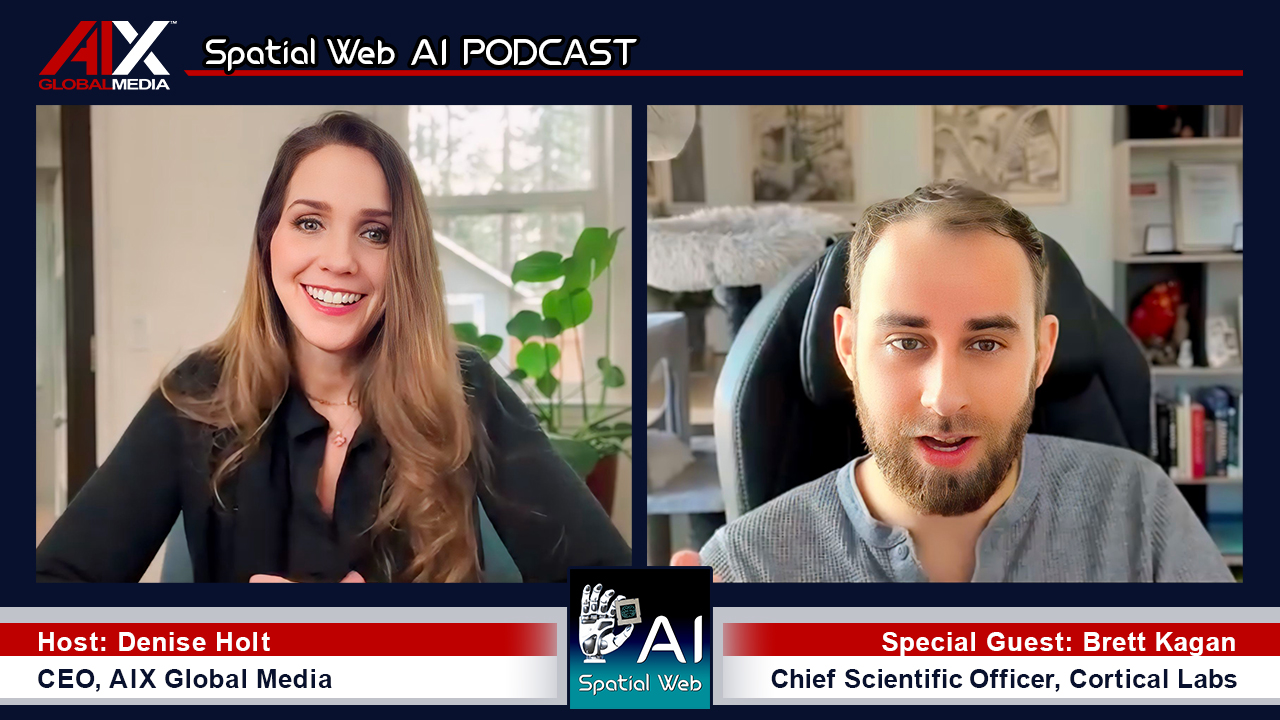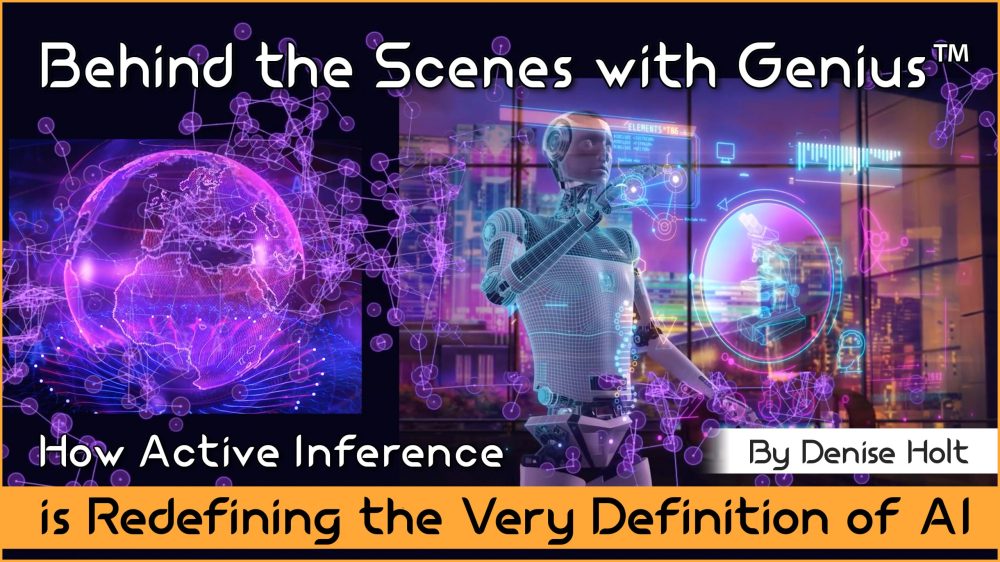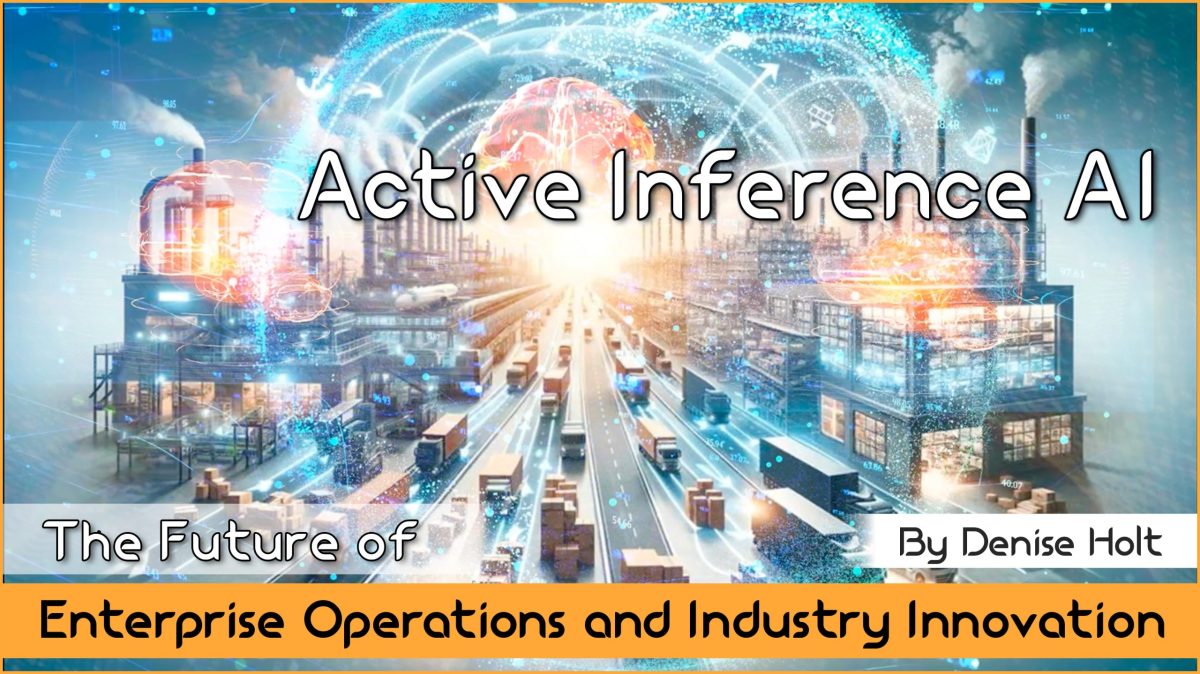
The convergence of two groundbreaking technologies is reshaping how we think about AI, automation, and intelligent systems, affecting every industry...

AI development is expensive, and even though open-source foundation AI models are available to anyone, it takes a considerable amount of time, about two years, to train the model by feeding it enough big data before you can begin to expect acceptable results.
That’s exactly what VERSES AI has created.
VERSES AI is a next-gen AI company, developing a type of artificial intelligence that eclipses the capabilities of current machine learning/deep learning AI technology, through an artificial intelligence method called, Active Inference AI, which mimics the activity of biological organisms and how the human brain operates.
VERSES has created a platform called, Genius™ OS, in which anyone can build an Intelligent Agent, or “Smart App”, on top of it, enabling democratized AI app development on a distributed network of intelligence… Think Apple App Store for artificial intelligence.
Today, the apps within the Apple App Store are completely unaware of each other. They are siloed applications built individually for singular purposes like banking, entertainment, shopping, your calendar, maps, games, etc… In the VERSES Genius™ OS , the ‘Smart Apps’ are networked together within an intelligence knowledge graph, providing exponentially extended opportunities for building applications that can truly augment our existence within our real world, as well as any virtual space.
VERSES calls these individual apps, “Intelligent Agents” or “IAs”, creating a network of distributed intelligence that enables each intelligent app to self-optimize and evolve in knowledge, updating in real-time, as circumstances, relationships, and states of being alter and continually change over the passing of time, enabling contextual awareness within the computing power, something that is not possible with any other current AI systems.
The difference is astounding. If a machine model/deep learning AI is like a power tool, then Active Inference with Genius™ OS IAs are like the human.
The massive difference that sets VERSES Genius™ OS apart from these deep learning models like Open AI’s ChatGPT, is that these current machine models are based on tech breakthroughs in neural nets from 10+ years ago, and that old technology has some severe limitations. Besides the cost, time, and enormous amount of data involved to train the AI deep learning models, the datasets used to train them are flawed and become outdated as soon as the training has completed. Plus, the only datasets that are available to train them with, is whatever information is ‘publicly’ accessible. That does not include the 90% of all data that is locked away behind privacy walls through passwords. This is a big problem when you live in an information reliant society.
If you asked ChatGPT about any current news or information, it would not be able to give you an accurate answer. As of the writing of this article, its answers are already a 1.5 years outdated. Likewise, if you wanted to build a specific AI tool like ChatGPT to enable beneficial or useful functionality within an enterprise organization or other entity that relies on privately held data, you would need to start from scratch and invest the enormous amount of time and money to achieve it yourself.
“It’s as if we cracked the code on the synapses between data. Essentially, the relationships between data are what knowledge is.” — Gabriel Rene, CEO of VERSES AI and Chairman of the Spatial Web Foundation.
Due to the Active Inference AI methodology inherent in the Genius™ Platform, these “Intelligent Agents” do not rely on Big Data. They do not need enormous amounts of data to refine their ability to perform. They rely on something much more profound, deliberate, and precise than pattern matching ability.
Interoperable Mapping and Identification — between humans, machines, and objects.
Genius™ “IAs” achieve their intelligence through computable context. Genius™ OS “Intelligent Agents” understand the physical world in the same way humans do by translating and mapping the states of being as well as the who, what, when, where, how, and why of every person place or thing from the physical world, into the virtual world of digital twins and spatial environments. This level of programmable context allows for objective meaning to be attached to every entity, and relationship between entities, in any space over time.
This means that even small amounts of data can be made smart and built upon to increase understanding and knowledge. No more need for big data model training.
Genius™ OS, constructed upon the open standard Spatial Web Protocol, HSTP (Hyperspace Transaction Protocol), and its formatting language, HSML (Hyperspace Modeling Language), enables a system in which context informs the Genius™ OS AI organism, providing the “Intelligent Agents” with detailed information regarding: states of being, traits, permissions, authority, and more.
VERSES Genius™ Platform is built to address three distinct challenges facing an interoperable and intelligent Network of Everything between humans, objects, machines, and all the disparate Web 3.0 and XR technologies, various hardware, and all data systems. These complexities can be broken down into three categories — spatial, knowledge, and operational.
The VERSES Genius™ Platform incorporates five “Flow” modules to address all of these requirements while deploying the Genius™ OS “Intelligent Agent” applications, seamlessly handing resource requirements.
VERSES describes these “Flow” modules as follows:
These implementations enable a system of self-optimization, resulting in adaptive intelligence by and between all entities within the network, satisfying VERSES five core requirements:
VERSES summarizes their KOSM™ OS solution as:
Large Language Models (LLMs) like ChatGPT, and Image Generative Models like DALL.E or MidJourney, have enabled humans to augment our ideas. Type in a prompt, and these models will output an image representing an idea that previously only existed inside of your mind. Ask a question, provide a few details, and get a direct answer or even an entire customized report, essay, or original story.
These are all very powerful creation tools that augment our thinking and creativity, with the ability to create content with increased efficiency, significantly reducing the time it would have taken to produce similar results on our own.
However, the Genius™ Platform goes much further than that. It networks multi-dimensional spaces together with all IOT devices, humans, objects, and machines, introducing and enabling a programmable network of nested “IA’s” (Intelligent Agents), capable of augmenting our entire world. Beyond mere thoughts and ideas, every physical and digital interaction across every data point, including all of the relationships and meanings in between, are now computable and measurable, forming intelligent connections, drawing insights, and creating opportunities for efficiencies that were never possible until now.
Augmented Reality is upon us, and VERSES Genius™ Platform is swinging the doors wide open, granting equal access to all, by ushering in massive development opportunities within the artificial intelligence space.
This is Part 3 of a three part series entitled, The Spatial Web and the Era of AI.
Missed Part 1? Check it out here.
To learn more about the Spatial Web Protocol and the evolution of Web 3.0, visit SpatialWebFoundation.org
All content on this site is independently created by Denise Holt. If you enjoy this content, please consider supporting my efforts at patreon.com/SpatialWebAI

The convergence of two groundbreaking technologies is reshaping how we think about AI, automation, and intelligent systems, affecting every industry...

On 29 May 2025, the IEEE Standards Board cast the final vote that transformed P2874 into the official IEEE 2874–2025...

Explore the future of agent communication protocols like MCP, ACP, A2A, and ANP in the age of the Spatial Web...

Fusing neurons with silicon chips might sound like science fiction, but for Cortical Labs, it represents what's possible in AI...

Ten years ago, on March 31, 2015, I interviewed Katryna Dow, CEO and Founder of Meeco, to discuss an emerging...

We stand at a critical juncture in AI that few truly understand. LLMs can automate tasks but lack true agency....

VERSES AI 's New Genius™ Platform Delivers Far More Performance than Open AI's Most Advanced Model at a Fraction of...

Go behind the scenes of Genius —with probabilistic models, explainable and self-organizing AI, able to reason, plan and adapt under...

By understanding and adopting Active Inference AI, enterprises can overcome the limitations of deep learning models, unlocking smarter, more responsive,...